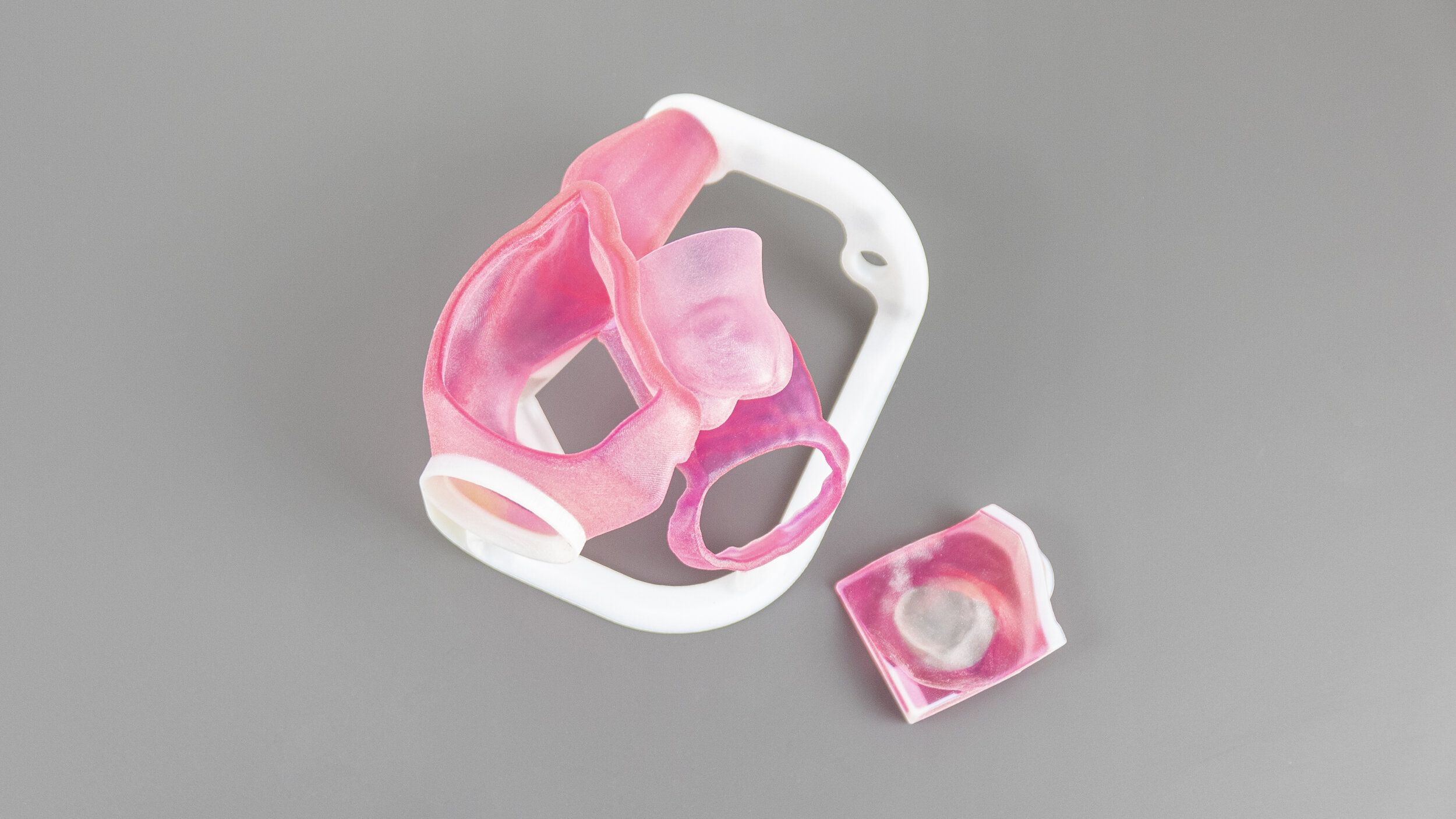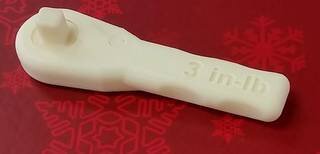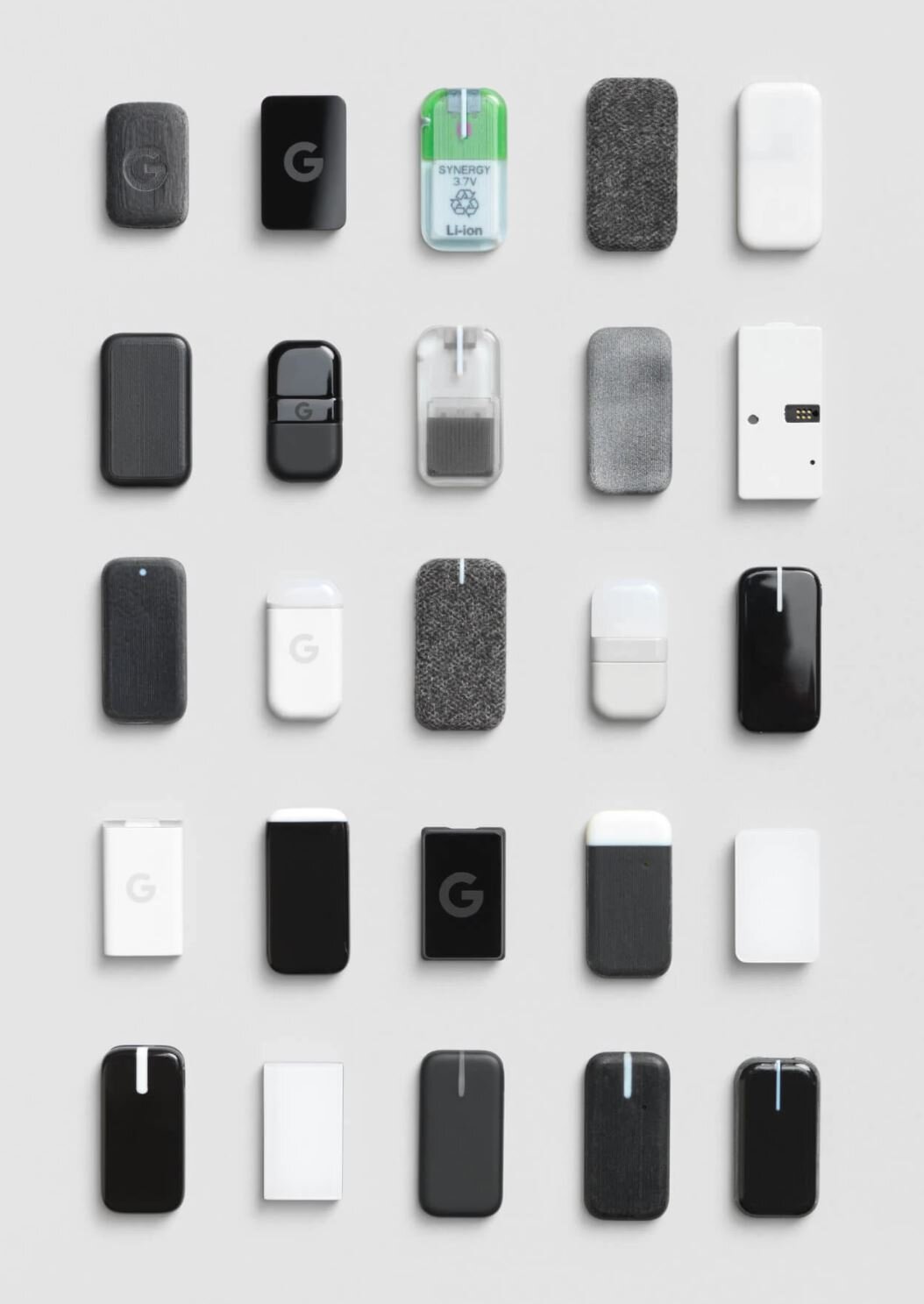10 Innovative Uses of 3D Printing
Mercedes all-black livery for the 2020 Formula One season
Could you be 3D printing? The technology is sometimes viewed as a process that’s exceedingly futuristic, technical, and niche. As a result, many people shy away from considering its applications for themselves or their business. This article presents 10 real-world applications of 3D printing across various industries.
Anatomically Correct Organ Models
Biomodex 3D printed transseptal puncture training system
Doctors, scientists, and biomedical engineers have long lauded 3D printing for its applications in the medical field. Non-stop innovation in printer and material technology has made it possible to print a variety of parts and tools that are used in both clinical and research settings.
One example of such innovation comes from Biomodex who recently began 3D printing a training system for a cardiac procedure called transseptal puncture. The materials they use emulate both the look and feel of a human heart which allows cardiologists to practice the procedure in a more realistic environment than in the past. The hope is that a more realistic training setting will translate to better patient outcomes.
Coral Reef Restoration
Reef Design Lab’s MARS ceramic 3D printed modular system
Global warming and other human-linked activities have negatively impacted coral reefs for decades, leading to significant loss of the ecosystem. Coral reefs play a vital role in protecting shorelines, feeding communities, and providing economic support, among other things. Many groups and businesses have stepped up to protect and restore the precious ecosystem--several of which have incorporated 3D printing into their strategy.
3D printing has been used to create structures that can encourage new growth and expansion of coral reefs when installed in the proper environment. 3D printing coral-like structures enables the design of organically-shaped parts that can be printed in biodegradable and/or sustainable materials. The 3D process also allows researchers to easily scale from experiments in a lab environment to full-scale structures that can be deployed in real-world environments.
Tools Printed in Space
4.48-inch-long by 1.29-inch-wide wrench designed by Noah Paul-Gin
What happens when an astronaut at the International Space Station needs a new tool? Before, they had to wait for a delivery of supplies made by a pre-scheduled shuttle launch. Now, thanks to a new 3D printer in the ISS, they have the ability to print certain tools and parts on-demand.
While the printer is in space, the files are actually sent to it from NASA’s 3D printer program manager at the Marshall Space Flight Center in Huntsville, Alabama. For the printer program’s final test print a team designed, approved, and printed a usable ratchet wrench in less than a week. This technology will provide increased value as crews spend more time in space and travel further distances.
Athletic Shoes
Adidas Futurecraft 4D shoe with 3D printed midsole
Footwear is a perfect example of how the use of 3D printing has progressed over the years. Initially, companies used it to prototype new designs, but quickly realized its potential for creating end-use components that are not easily manufactured traditionally.
Adidas and 3D printing company Carbon are currently working on a process that will allow for mass 3D printing of custom midsoles for their Futurecraft 4D shoe. The variable properties of the midsole make it impossible to create through injection or compression molding. 3D printing the midsole means the same type of shoe can be personalized based on customers’ physiology and what activity the shoe will be used for.
Wearable Technology
Google’s ATAP (Advanced Technology and Projects) hardware invention studio is currently developing wearable technology that can be integrated directly into clothing and connected to an app on your smartphone. The platform is called Jacquard by Google and the hardware is essentially a tag that can monitor movement and perform digital actions through the use of motions like swiping and tapping.
Where does 3D printing come into this? Google has partnered with Stratasys to prototype the devices. The prototypes are being printed using PolyJet technology which allows designers to incorporate a variety of materials and colors. These hyper-realistic prototypes reduce the risk associated with bringing a new product to market by making it easier to optimize and update features throughout the design process.
Jewelry
Ring from Zimarty’s 3D printed jewelry line
Creating custom jewelry has for millennia been a laborious process. Highly skilled jewelers work with tiny parts and tools to create beautiful, lasting pieces of art for their customers. While this will continue to be true, 3D printing has made it possible to create some delicate and personalized pieces in much less time.
Zimarty is a prime example of a jewelry company that is harnessing the power of 3D printing. They’ve recently combined math and fashion to create a line of 3D printed necklaces, rings, earrings, and bracelets based on the Hilbert Curve. These pieces are printed in a durable, yet light and flexible nylon material. Another way to create 3D printed jewelry is to print a negative of the piece in resin and then use that to cast it in the desired metal.
Formula 1 Car Parts
3D printing can provide a competitive advantage to companies that bring physical products to market as well as those that offer entertainment products. Formula 1 has been utilizing additive manufacturing since as early as 1998 to enhance the performance of their vehicles and thereby add excitement to the sport.
The ability to make small quantities of custom parts in a very short amount of time provides significant value to Formula 1. The materials used in 3D printing also tend to be lighter but just as durable as traditional parts, making it ideal for race cars. Following the lead of Formula 1, other motor racing companies are now also beginning to incorporate 3D printing into their engineering as well.
Candy
90s Throwback Bonbons from Sugar Lab
Some things might not need to be 3D printed, but doing so can make them much more interesting and unique. This is the case with Sugar Lab, a company that 3D prints beautiful works of candy-art.
Sugar lab created a printer that uses their perfected mixture of sugar and water as a filament of sorts. The outputs are intricate geometric shapes that cannot be created using traditional candy-making techniques.
Musical Instruments
MONAD Studio’s 3D printed 2-string violin
From the basic kazoo all the way to a violin/art installation, musicians are taking full advantage of the 3D printing revolution. Beyond printing whole instruments, musicians and manufacturers are also utilizing the technology to print replacement parts and accessories. This can reduce the amount of time and money it takes to repair and customize instruments. We may also someday see entirely new instruments that were not possible to create prior to 3D printing.
Surf fins
Surf fin printed from a Westkust design file
Without the fins on a surfboard surfers have little control over the board. The size, number, and placement of these small but important pieces is typically a matter of personal preference. However, the specific design of each fin was less customizable until recently when Westkust began designing 3D printable files.
Westkust makes it not only possible, but easy to customize your board and fins. They also are open source, meaning that you don’t have to pay for the digital files. You can simply download them and either print the parts yourself or have a 3D printing company print them for you (for a price).
Talk to us about how you might be able to make the world a better place by integrating 3D printing into your work.












